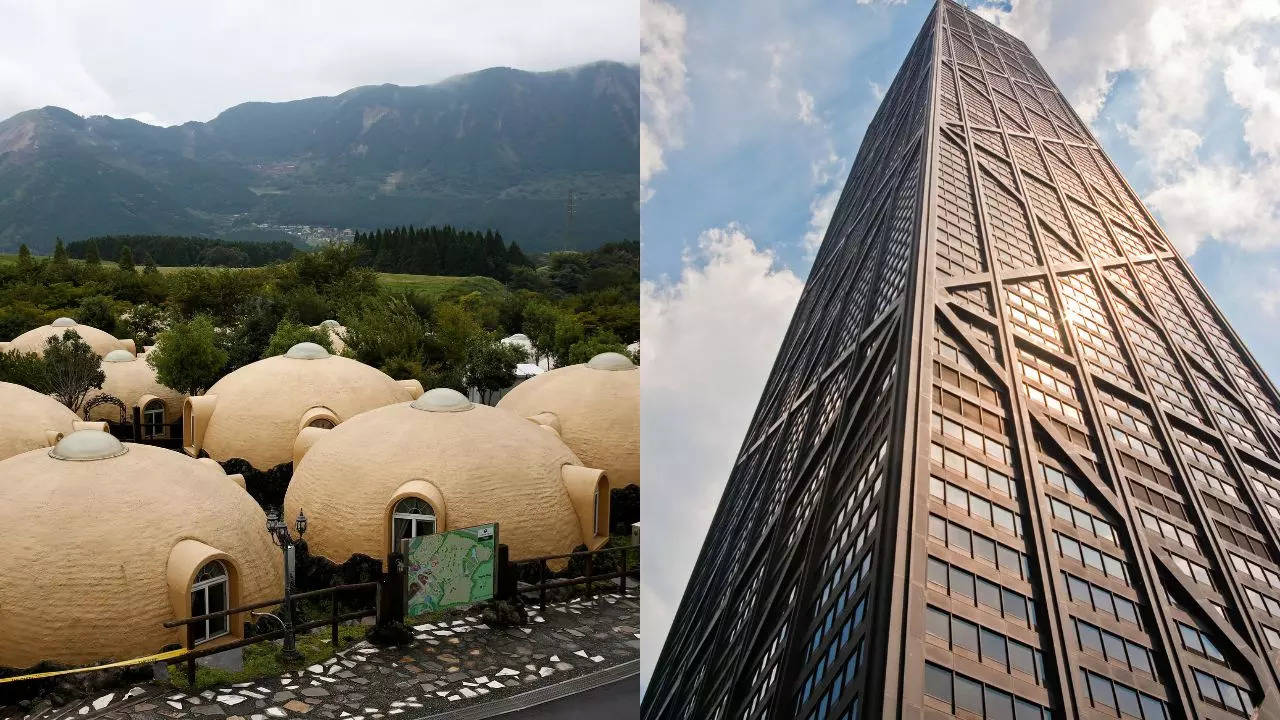[ad_1]
10 cutting-edge applied sciences that assist buildings resist earthquakes
Cardboard tubes
Cardboard tubes would possibly look like an unlikely answer for earthquake resistance, however they’ve discovered their place in seismic design. These tubes, usually constituted of strengthened cardboard, are used as short-term buildings or helps. Their flexibility and light-weight nature enable them to soak up and dissipate seismic power, minimizing harm to extra everlasting buildings. They’re notably helpful in short-term housing and low-cost building.
Shock absorbers
Shock absorbers, just like these utilized in automobiles, are integral in fashionable earthquake-resistant buildings. These gadgets, usually put in between a constructing’s basis and its superstructure, soak up and dissipate the power generated by seismic forces. By lowering the quantity of power transferred to the constructing, shock absorbers assist stop structural harm and guarantee stability throughout an earthquake.
Biomaterials
Biomaterials are an rising subject in earthquake engineering. These supplies, derived from pure sources, provide distinctive properties that may improve a constructing’s resilience. For instance, sure biomaterials have been developed to own excessive flexibility and power, making them best for reinforcing buildings. Their sustainable nature additionally contributes to greener building practices.
Form reminiscence alloys
Form reminiscence alloys (SMAs) are metals that may return to their unique form after being deformed. In earthquake-resistant design, SMAs are utilized in structural elements and connectors. When subjected to seismic forces, these alloys deform however then revert to their unique form, successfully restoring structural integrity and absorbing power.
Carbon fiber wrap
Carbon fiber wrap is a contemporary reinforcement expertise used to strengthen present buildings. Carbon fiber sheets or wraps are utilized to columns, beams, and different vital elements. These wraps are light-weight but extraordinarily sturdy, offering further help and suppleness to buildings, serving to them stand up to seismic forces with out including important weight.
Replaceable fuses
Replaceable fuses are an important innovation in earthquake-resistant design. These fuses are designed to soak up and dissipate seismic power, defending the constructing’s major construction from harm. Within the occasion of an earthquake, the fuses take the brunt of the forces and may be simply changed after the occasion, lowering restore prices and downtime.
Rocking core-wall
The rocking core-wall expertise entails a central core that’s designed to rock or pivot throughout an earthquake. This motion helps soak up and dissipate seismic power, lowering the forces transmitted to the constructing’s superstructure. Rocking core-walls may be notably efficient in high-rise buildings, the place they supply stability and improve general resilience.
Pendulum energy
Pendulum energy is a classy system that makes use of pendulum-like gadgets to counteract seismic forces. These gadgets, usually put in at key factors in a constructing, swing in response to seismic exercise, creating forces that counterbalance the movement of the constructing. This dynamic response helps stabilize the construction and decrease harm.
The levitating basis
The levitating basis is an progressive strategy that entails putting a constructing on a layer of elastic bearings or isolators. These bearings enable the constructing to “float” or transfer independently of the bottom movement throughout an earthquake. This isolation method considerably reduces the quantity of seismic power transferred to the constructing, enhancing its skill to resist tremors.
Seismic invisibility cloak
The seismic invisibility cloak is a cutting-edge expertise impressed by ideas from optical cloaking. This expertise entails making a particular layer round a constructing that redirects seismic waves away from the construction. By successfully “bending” the seismic waves across the constructing, this cloak minimizes the impression of the earthquake on the construction.
Additionally learn: |From memory foam to water filters: Ten NASA inventions we use everyday
[ad_2]
This Publish could include copywrite



